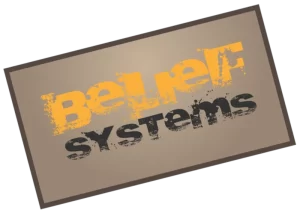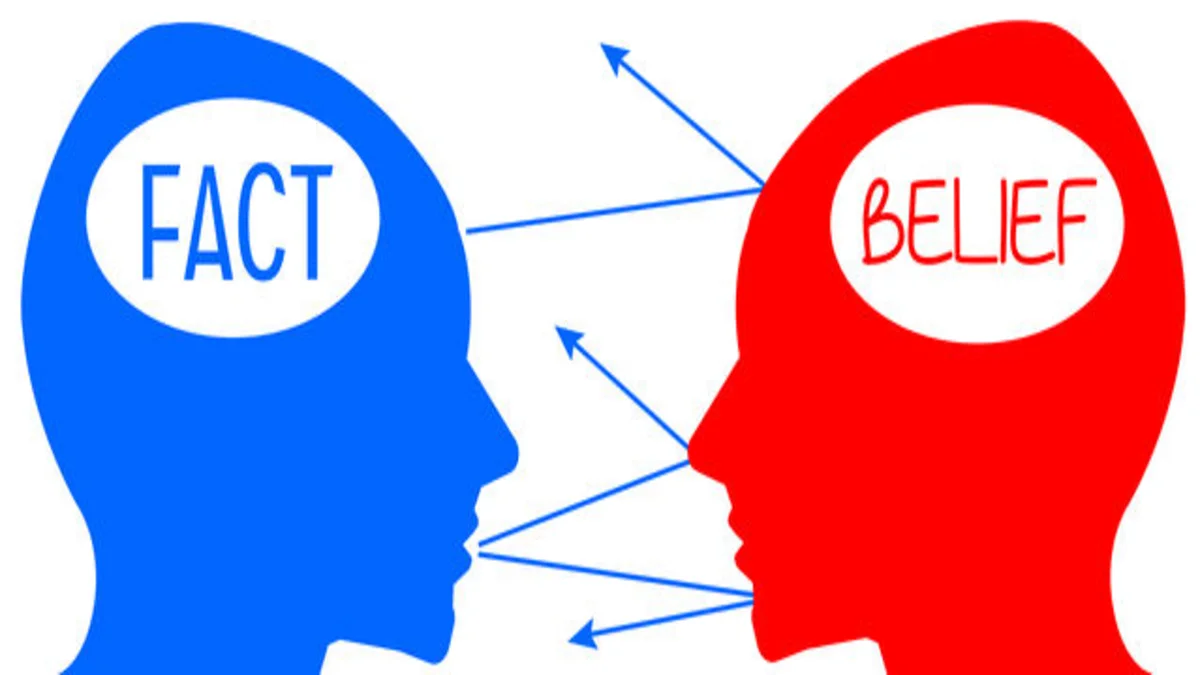10 ways to develop a Strong belief System
- Always respond positively, whether the circumstances are according to you or not.
- Do not end the day with a negative statement because your subconscious mind responds to your reaction to every moment.
- You receive a large number of inputs from this outer world. Now it is upon you how you react to these inputs. Your reaction to these situations creates your belief.
- Always see the positive and constructive side of any situation and mark it as to be true.
- Avoid the people who have negative responses in any situation.
- Always surrounded by people of constructive nature and progressive thought.
- Always keep in mind ” Your future is the mirror image of your present thoughts.”
What is Belief System
The belief system is the result of your dominant thoughts. The thoughts and experiences of daily life are when repeated they seems to be true, and then they become your belief system which is permanent. Once your belief system established then it works automatically. Each and every response of your mind to the anything happening in your life is responsible for the structure of belief system.
We have five senses through which we receive experiences like good, bad, happiness, desire, complaints, praise and all other feelings like that. After receiving these experiences our mind and body responds to all this. This response is responsible for your belief system and your future decisions.
There are thousands of thoughts come in our mind in a day. We have no control over these thoughts. But we have to be aware of these thoughts. We should give preference to useful thoughts only. We should take care of our dominant thoughts. Our dominant thoughts make deep impacts or images on our subconscious mind. And our subconscious mind responds to these images, consider them as true and works accordingly.
How to develop your own beliefs system

Beliefs are the principles that drive your actions in life and help you make sense of the world around you. For the most part, your early beliefs were influenced by the people around you, namely your parents. However, as you grew older, your experiences as well as those of friends, teachers, and even TV personalities began to influence your belief system. If you want to develop your own beliefs, you must first become aware of your pre-existing beliefs and decide if they are helpful. Then, explore different belief systems in order to form your own.
Method 1 – Auditing Your Current Beliefs
Step 1: Get some space.
It can take time to become aware of the beliefs that drive your life. You can more effectively do this by backing off from others for a time. If you want to develop your own beliefs, you will need some distance from others so that you can more adequately tune into your own mind.
Take a weekend getaway to a quiet place where you can think. Or, if you can’t afford a vacation right now, simply isolate yourself at home or in your room for a day or so.
Step 2 : Spot the connection between thoughts and actions.
The development of beliefs doesn’t happen consciously. Therefore, if you wish to form your own, you will need to bring consciousness to those that already guide your life. You can audit your current belief system by training yourself to pay close attention to the relationship between your thoughts and actions. Use the ABC model.
A stands for the activating event. Example: Your professor scolds you for submitting an assignment late.
B stands for the belief. Example: You think, “I can’t do anything right.”
C stands for the consequence (or subsequent actions). Example: You don’t try as hard to get things turned in on time.
Step 3: Start a journaling practice.
Tuning into your thoughts and their underlying beliefs is like a muscle—the more you use it, the more it grows. Journaling is a great way to recognize your thought patterns. Begin a free writing practice each day in which you simply write down whatever is on your mind. Once you have dumped out all those thoughts, review what you wrote.
Train yourself to find the thoughts and core beliefs that drive your behaviors.
Step 4 : Discard beliefs that no longer serve you.
Previously, when you had no awareness of your thoughts, many negative beliefs went unchallenged. Take the time to challenge your interpretation of various belief systems. Ask yourself whether your core beliefs are helpful and rational. Discard the beliefs that do not positively influence your life.
For instance, you believe, “I can’t do anything right.” Such a belief certainly does not serve your life. You can search for other possible explanations behind it, like “I need to work harder” or “I need to develop better time-management skills.”
By challenging and re framing beliefs like this, you can ensure that your current belief system is positive and growth-oriented.
Method 2 : Exploring the Possibilities
Step 5 :Travel to new places.
One of the most powerful ways to expand your worldview and develop your own beliefs is by seeing new places. Oftentimes, your pre-existing belief system is built around your own narrow experience. When you see the world beyond your own community, your experience broadens, and so do your beliefs.
Plan to explore as much as you can. Depending on your budget, this might include visiting new states, countries, or continents. However, you don’t have to travel far to get a new perspective. Consider taking a foreign culture course at your local college or visiting a museum in your area.
Step 6 : Meet people with different points-of-view.
When you engage with people who are different than you, you can learn more about their belief system. In turn, you may better inform yourself on what beliefs suit you best. Strike up a conversation with someone whose background is different than your own.[4]
They could have an alternative political perspective, be from a different culture, or have been raised with a unique lifestyle.
If you are too nervous to chat with others, you might start out reading books about people who lead different lifestyles.
Step 7 : Try new things.
Exploring new activities and ways of being can push you out of your comfort zone. As a result, you may develop new beliefs about yourself and the world around you.
Challenge yourself to learn a new skill like salsa dancing. Learn another language. Eat in a foreign restaurant. Include different colors or prints in your wardrobe than usual.[5]
Step 8 : Explore your spirituality.
Many people’s belief systems are grounded in moral decisions of right and wrong. You can empower your own belief system by experimenting with different spiritual practices or religious beliefs.
Visit a different church or place of worship. Start a meditation practice. Or, spend more time in nature.
This might be challenging if the ideas are drastically different from what you were raised to believe. Take your exploration slowly by finding small ways to explore (e.g. reading a book versus attending a worship service) until you feel more comfortable.
Method : 3 Establishing Your Belief System
Step 9 : Label your core values.
After you have reviewed your pre-existing beliefs and explored alternatives, it can help to try to define your personal values. An important part of developing a belief system is figuring out what you stand for, and your values are basically the causes you consider important.
You can pinpoint your personal values by reflecting on times when you felt the happiest, most proud or satisfied. What was happening during these times? Try to label the factors that contributed to these feelings.
In addition to reflection exercises, you can also complete a values inventory like the Personal Values Assessment.
Step 10 : Share your beliefs with others.
A big part of establishing your own belief system is making your ideas known to others. Each time you share your beliefs with someone else, you affirm them. Also, you can make your position clear with others who try to influence your beliefs.
For instance, if your belief system has changed from that of family or friends, you might inform them. Say something like, “Well, actually my views on that have changed…” Then, briefly share your new position.
When you share your beliefs with others, avoid doing so defensively. Simply speak with polite confidence.
Step 11: Anticipate others’ reactions to your beliefs.
If your new belief system is drastically different than that of your family members or friends, your disclosure may be met unfavorably. Prepare yourself for negative reactions, but don’t allow their disapproval to make you doubt your decisions. Remember that everyone is entitled to their own beliefs, even if those closest to you don’t agree.[10]
A good way to respond is with open-mindedness and honesty. You might say, “I know this may come as a shock to you. But I’m happy to answer any questions you have.”
Give them, and yourself, time to come to terms with a change in beliefs. Over time, your loved ones may come to support your beliefs, or at least not actively oppose them.
Step 12 : Ensure that your actions align with your beliefs.
Once you have confirmed your new belief system, regularly audit your everyday actions to be sure they are in line with your beliefs. You are happiest when your daily actions and choices support your core values and beliefs. Plus, when you live by your beliefs, you are able to be your most authentic self.
Step 13: Anticipate a change in beliefs as you learn and grow.
Even after you have developed your own belief system, expect it to morph over time. As you travel, learn new things, meet new people, and have new life experiences, your perspective on various beliefs will likely change. This is completely normal, and okay.
